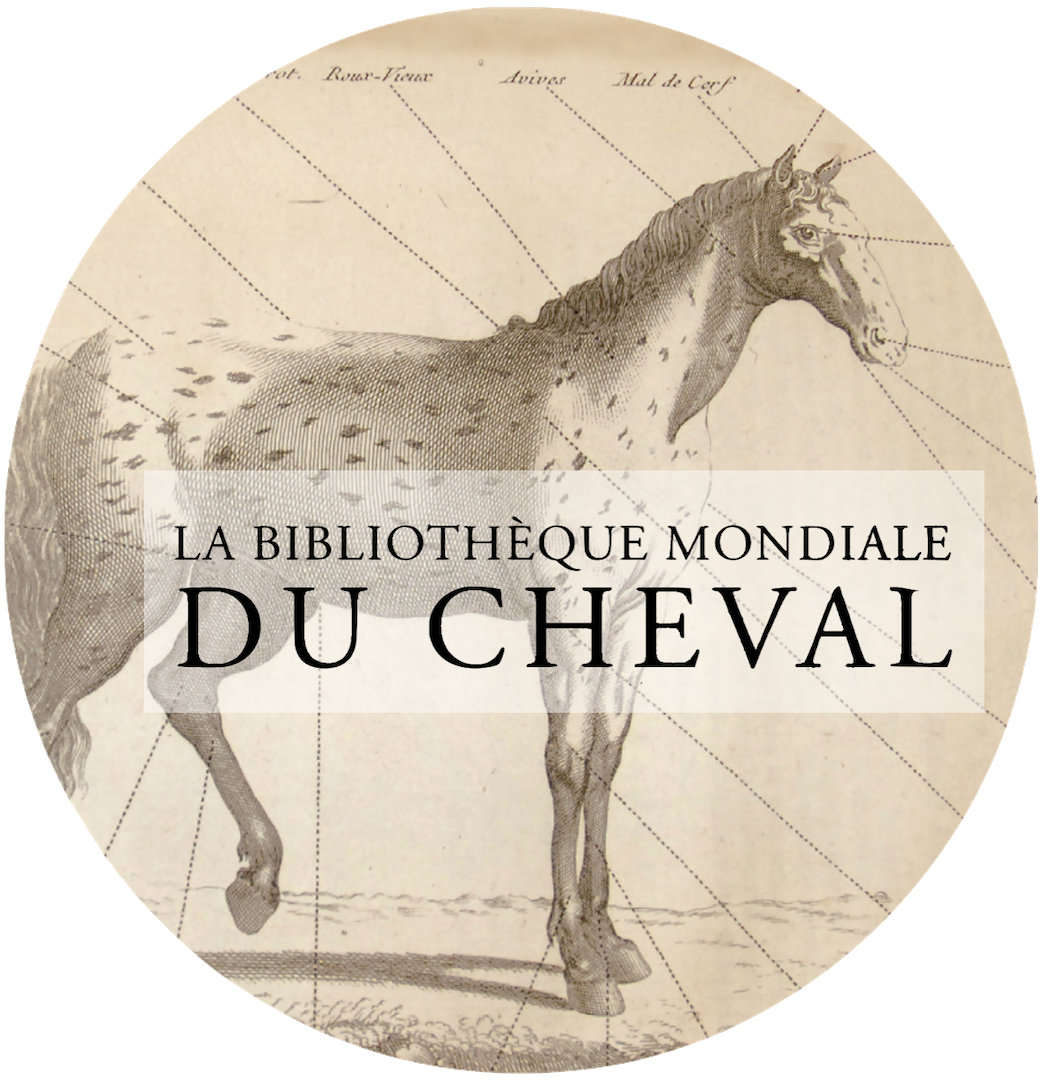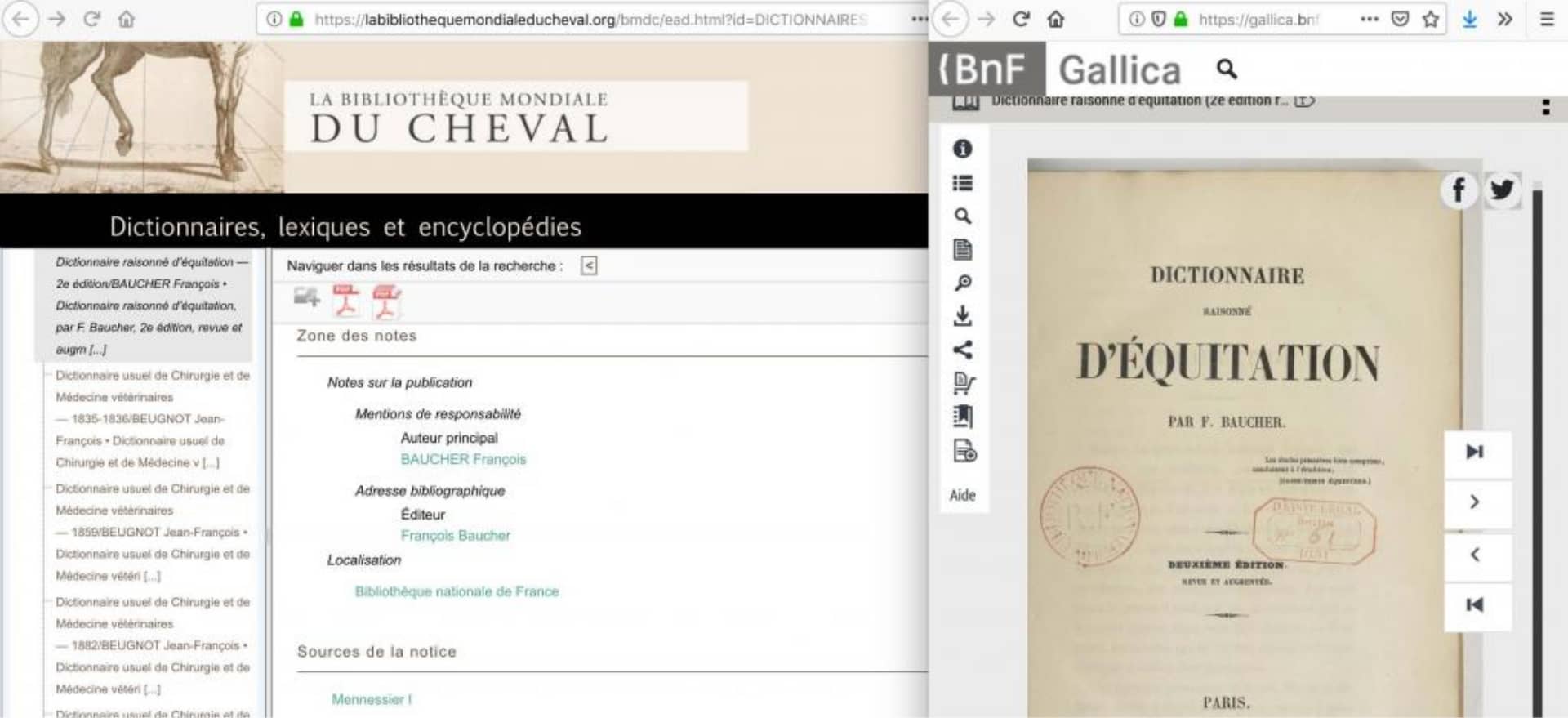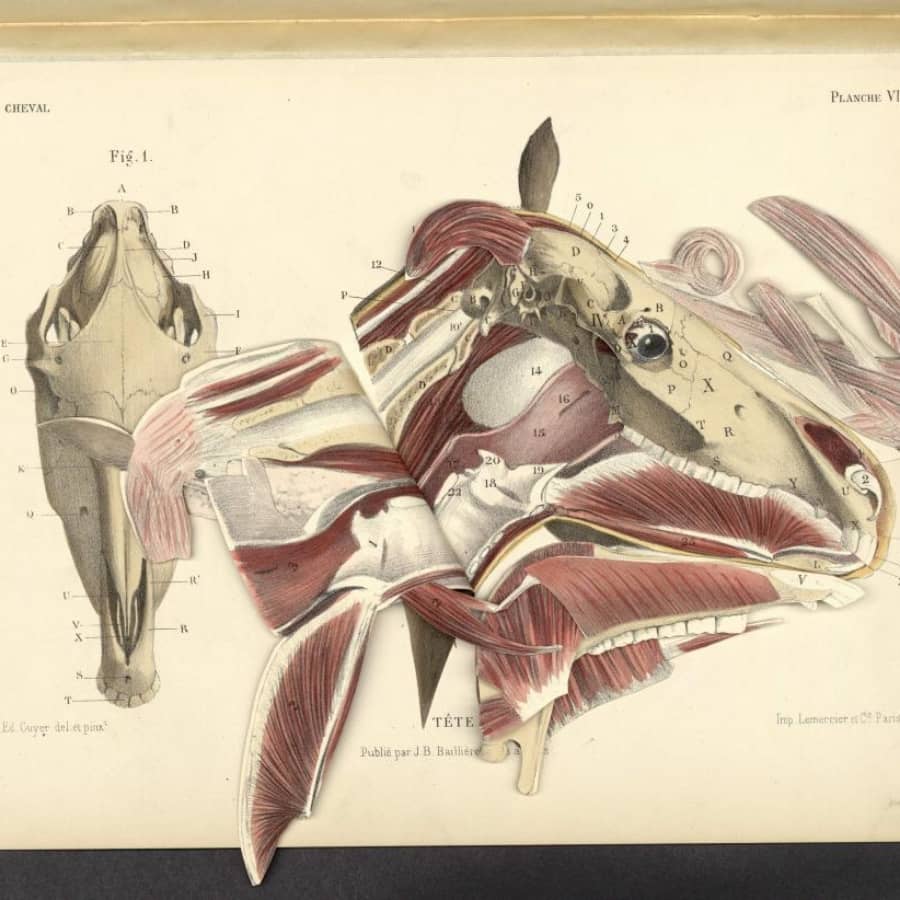La Bibliothèque Mondiale du Cheval (The World Horse Library)
Marie-Laure PERETTI
Ministère de la Culture
BNF
IFCE

Collect, inventory, gather…
Since the dawn of time it has accompanied the development of humanity. On the roads, harnessed, mounted, in the field, in the mine, in the conquest of unknown lands, in hunting, in war then in the circus, on the racecourses, in the rides… He was an unfailing, unparalleled servant. The horse is a living, intoxicating, exciting, inspiring subject…
From the tablets of Kikkuli, or the treatise of Xenophon to the present day via Frederico Grisone, William Cavendish Duke of Newcastle, the Guérinière and her bible of enlightenment, the enemy brothers Baucher and d’Aure, Victor Eugène Géruzez known as Crafty for more fantasy, General Decarpentry, the Portuguese squire Nuno Oliveira, but also the iconoclast Jean d’Orgeix, the horse is a subject of culture, of technique and inexhaustible civilization.
Thousands of works have been dedicated to it, hundreds of authors have tackled it over the centuries, in Europe but also throughout the world.
The ambition of the World Horse Library is to unearth them, to identify them, to list them where they are found in public or private funds in order to constitute, from France, the first global virtual library dedicated to them. A task which draws inspiration from and largely benefits from the work already carried out by specialists of the genre, namely General Mennessier de La Lance in France, the British Frederick Henry Huth, the Marquis de Torrecilla in Spain…
The Library relies primarily on the latest inventory dating from 1921, established by Mennessier de la Lance. If the interests of the time gave pride of place to cavalry and veterinary manuals, today, new themes have appeared, and complement knowledge about the horse: this animal was at the heart of our economic and cultural development before the automobile came to replace it at the beginning of the 20th century. The horse nevertheless succeeded in its revolution, passing from the military and agricultural world to integrate into that of leisure and sport. The work of Mennessier de la Lance reveals a living photograph of a rapidly changing world and provides the first keys to understanding the current period.

Inform, educate, transmit
Opportunity, ambition or rather necessity? If Normandy, certainly a land of horses, appears legitimate to carry out such a project, the MRSH of Caen which is developing it, is for its part a leader in intelligent digitalization. So many assets for a single goal: to allow the transmission of this cultural heritage, this wealth of information on the subject, these educational precepts which are valid as much for the horses
as for those who ride them to the generations who will follow us.
Thus this sum of ignored, unknown books, this mass of fragmented knowledge, accumulated and often difficult, even delicate to access, fragile, will, from then on, be strong with mastered digital techniques and their constantly postponed developments, within the reach of researchers, enthusiasts, the curious… of our children, for centuries to come. It is therefore also necessary, because too few public or private libraries, collectors or owners of rare works, have the skills or means to envisage this digital transformation at the most advanced level, of research and contemporary techniques. This work will be done in trust between the MRSH teams and the owners of rare and expensive works in a spirit based on complementarities, shared gains and transparency.
Digitize, enrich, promote
The MRSH-CNRS University of Caen Normandy is one of the most advanced European centers in terms of digital documents and writings: a resource center for the digital policy of journals supported by the CNRS, the support point for an EQUIPEX (Equipment of Excellence) of the PIA1 (Plan Investissement d’Avenir), as well as the basis of a national research infrastructure on digital writing (METOPES) which
is based on analysis and data structuring to international standards (XML TEI-EAD).
More than 30 academic content projects are constantly under development. Among these, the Virtual Library of Mont Saint-Michel, the work of Descartes, the digitization of the Bayeux Tapestry and the digital inventories of the Parks and Gardens of Europe. A team of engineers is constantly working on the development of these projects, supported by a group of more than 80 teacher-researchers and doctoral students involved in a large generic research program on digital documents. The World Horse Library project builds on this foundation and will benefit from all the research developments that emerge there.


This intelligent digitization work will take on its full meaning through a dedicated website to promote it. Robust and sophisticated “Cistercian” on the one hand to meet the requirements of librarians, specialists, collectors, the site of the World Horse Library will also be lively, informative, educational for the attention of as many people as possible.
